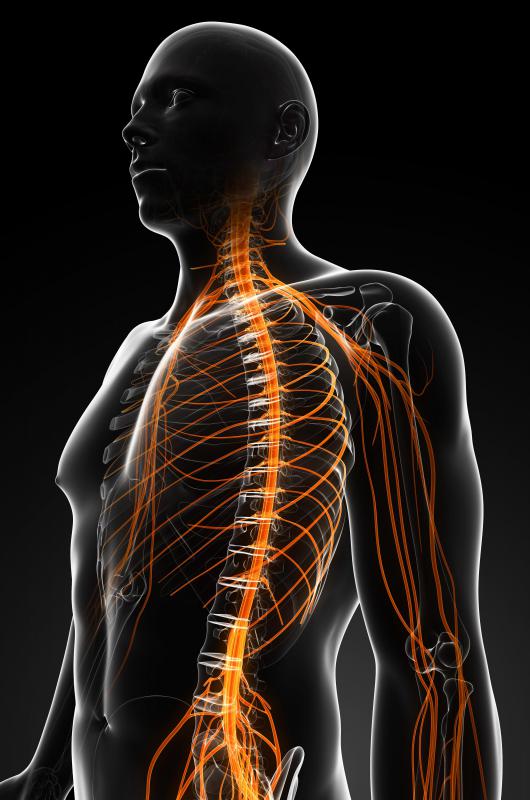At TheHealthBoard, we're committed to delivering accurate, trustworthy information. Our expert-authored content is rigorously fact-checked and sourced from credible authorities. Discover how we uphold the highest standards in providing you with reliable knowledge.
What Are the Different Types of Nerves in the Human Body?
Encompassing two divisions, the nervous system has a central nervous system (CNS) and a peripheral nervous system (PNS). Consisting of a brain that is connected to a spinal cord, the CNS serves as the primary control and integration center for incoming information. Relevant responses to incoming sensory and motor nerve information are determined here. The PNS has sensory receptors for the senses including sight and hearing. These structures communicate with the brain via cranial nerves in the human body and with the spinal cord by way of spinal nerves.
Including receptors responsible for reacting to changes in external surroundings, the somatic division of the nervous system includes sensory neurons that communicate with the CNS, as well as motor neurons needed to position the muscles for balance and body posture. There are 12 cranial nerves arising from the human brain which are arranged in pairs that transmit sensory information such as seeing, touching, and hearing. This is possible due to sensory receptors in the head, such as the optic nerves, for example, which transmit nerve signals from the eye's retina to the brain. Facial movements are controlled and adjusted by the third cranial nerves, which are referred to as the facial nerves, and the fourth cranial nerves are important to eyeball movement, referred to as the trochlear nerves.

Operating automatically without voluntary action, the autonomic division helps to maintain homeostasis of the system through regulatory mechanisms such as for heart rate control and keeping the body temperature constant. Receptors residing within organs transport information via the afferent nerves in the human body to the CNS for interpretation. Decisions are then transmitted on efferent nerves to targeted glands and muscles. The efferent portion of the autonomic nervous system is further divided into the parasympathetic and sympathetic nervous systems. Both types of nerves in the human body are found in organs, each having effects that reverse the actions of the other.

Spinal nerves — 31 pairs in total — stem from the spinal cord which are named according to the region of the vertebral column from which they arise. Eight pairs of cervical nerves, 12 pairs of nerves from the thoracic region, and five pairs of lumbar nerves proceed from the column. A pair of nerves also emerge from the coccygeal area of the spinal cord. Every spinal nerve separates into several branches: autonomic, dorsal, and ventral. Nerves in the human body from the backbone can also form a plexus, referring to a grouping of various spinal nerves.
AS FEATURED ON:
AS FEATURED ON:
















Discuss this Article
Post your comments